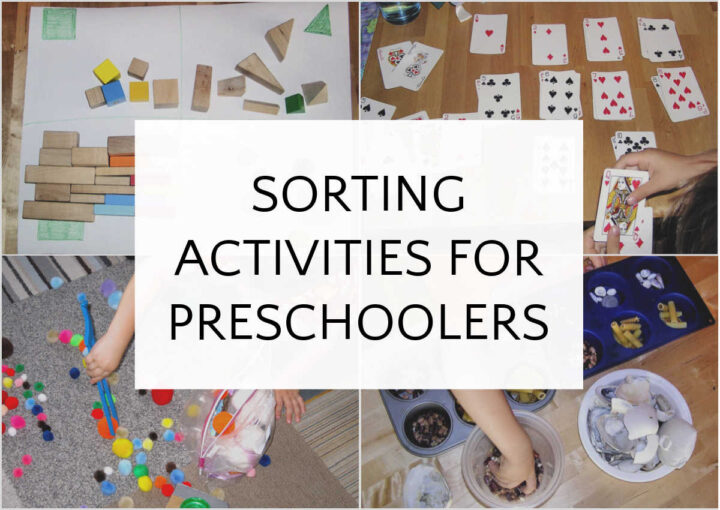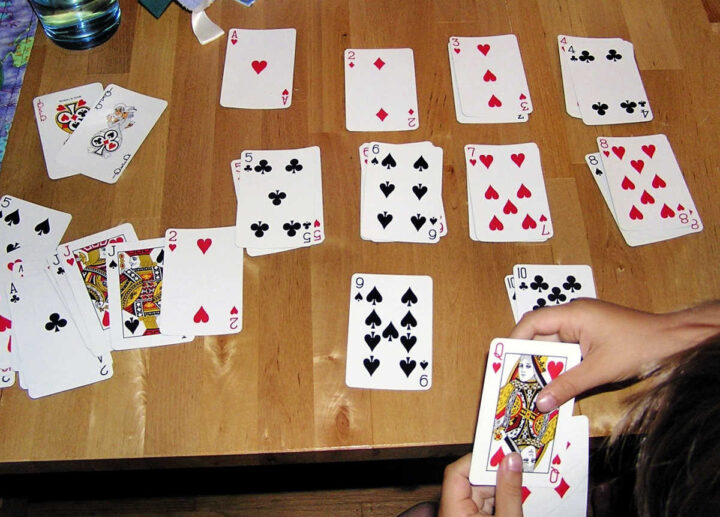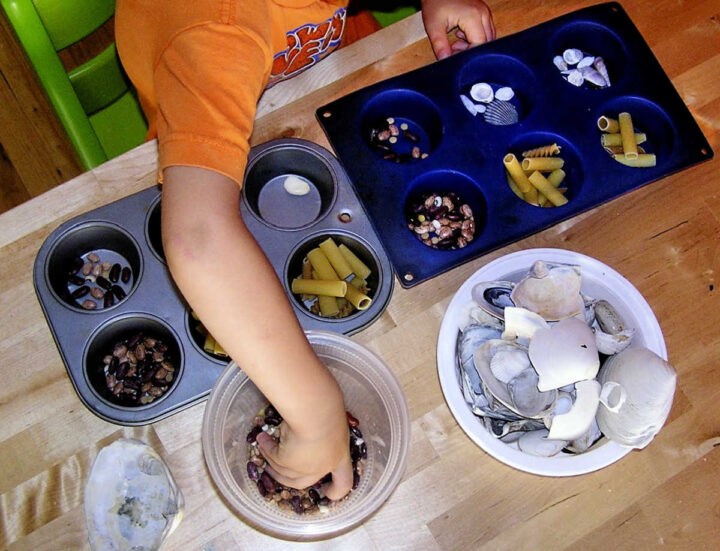Sorting activities are one of the best learning activities for preschoolers and toddlers. In fact, if you watch your child closely, you will notice they are naturally drawn to this type of activity.
And why wouldn't they be? A child's instinct is to make sense of the world, and identifying objects, drawing comparisons and making contrasts help them do just that.
In this article, we'll go through some basics about the benefits of sorting activities as well as give you some simple ideas for how you can incorporate sorting games and ideas into your child's at-home play time.

Table of contents
What are sorting activities?
Sorting activities are actions that require children to identify groups of items that have particular traits in common. Those traits can be characteristics like color, size, shape, and other classifications.
Children engaged in sorting activities are asking questions about what items belong together, and how they relate to one another. For example, a group of items may belong together because they are all red, even though they might be different shapes. Or, perhaps a child is sorting animals by species–for example, dogs vs. cats.
What do sorting activities teach children?
Sorting helps children develop visual perception, fine motor muscles, reasoning and problem solving skills. While working on classifying and grouping objects, young minds are busy analyzing similarities, differences and making choices.
These are skills necessary for higher learning because they help children develop the ability to organize and process information, skills known as executive function skills. Children use executive function skills for everything from decoding words for reading to working with others to getting ready to go to school in the morning.
Types of sorting activities
The ways preschoolers and toddlers can learn to classify things is endless. Here are a few simple ideas to get you started. No doubt, observing how your child interacts with the items will give you (and them!) more inspiration.
Color sorting
For toddlers, the easiest color sorting activity is to sort two colors into two piles. My toddler sat at the table with a pile of red and blue blocks. In front of him was a red paper and a blue paper. He had fun placing the red blocks on the red paper and the blue blocks on the blue paper. It's not fancy, but it works!

Preschoolers can work on more sophisticated color sorting by adding more and more colors to the mix.
Shape sorting
Circles, squares, and triangles, oh my! Shape sorting is a classic preschool activity.
You can do this very simple sorting game at home. With masking tape, mark out a circle, rectangle and triangle on the floor and ask your child to place any round objects they find in the circle, square or rectangular objects in the rectangle and triangular objects in the triangle.
You don't need a fancy shape sorting toy. Make your own shape sorter by cutting a circle, rectangle and triangle in the top of a box and ask your child to drop the corresponding blocks through the holds.
Once your child has explored shape sorting a few times, try this diy Montessori-inspired activity that teaches children to observe the similarities and differences between 2D and 3D shapes.
Sorting by size
There are so many ways to sort by size! One easy way to get started is to place a small box and a large box on the floor. Any objects that can't fit in the small box go into the big box!
Alternatively, give your child a tube to act as a chute (an empty paper towel roll works well), and a pile of objects of varying size. The child can sort the objects by dropping them through the tube into a box. If they fit, they drop down, if not, they get set aside. If you have multiple sized tubes, so much the better. Kids also get a big kick out of sliding objects down the chute!
Sorting by quantity
Quantity sorting activities can easily be modified for different skill levels. Toddlers can work on groups of 1s and 2s, preschoolers on groups in quantities up to 5, or higher.
A simple way to do this is to label your sorting container with numbers and have the child place the correct quantity in each space. We did this with an egg carton and pom poms. Pom poms are a great sorting item because they can also be separated by size and color.

Alternatively, if your child is working on number recognition, a deck of playing cards is perfect for sorting! My son loved separating out the cards by number and by suit.

Sorting by category
Tidying up a room gives children a natural way to learn to sort items by category. For example, ask your child to place all the books on a shelf, the stuffed toys on the bed, and the blocks in basket.
Or, have them help sort the laundry. Shirts in one pile, socks in another. You get the idea! Putting away cutlery also gives kids a hands-on practice in putting like with like.
Or, if your child has a huge collection of one type of toy, like toy vehicles, they can sort by type: trucks, service vehicles, cars, etc.
Sorting animals is another great category to work with. You can sort by where the animals live, by what they eat, whether they can swim or fly, etc.
Item Suggestions

What kind of objects are good for sorting? Almost anything! Sorting objects are all around you. Remember, children who still put items in their mouths should not use small objects, and should be supervised at all times.
Here are a few suggestions:
- Coins, see our coin sorting activity ideas
- Beans or pasta
- Blocks
- Pompoms
- Small toy animals like animals or vehicles
- Buttons or beads
- Kitchen items like spoons, paper cups, plastic cutlery
- Items from nature like leaves, pebbles, flowers
- Socks!
- Playing cards
- Shells
- Crayons (think: whole vs. broken!)
- Anything else you can think of, from large to small
Container ideas
Look around your home and you'll likely find lots of items that can be used for grouping items together. A muffin tin is a classic tool, but my toddler loved dropping wooden sticks in a popsicle mold.

Other tools and containers you can use:
- Egg cartons
- Ice cube trays
- An assortment of small containers nestled in a shoe box
- Ice pop molds
- Nesting bowls
- Paper cups
- Muffin tins
Remember, you don't necessarily need to set up a specific activity to engage your child's sorting skills. Work on incorporating it into practical, every day life activities and you'll see how much fun sorting activities are!




Leave a Reply